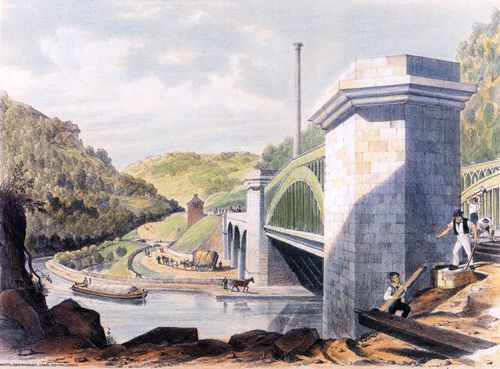
Tait's lithographs are said to be quite accurate, but the picture of Whitely Arches seems to distort the curve of the canal. The mill chimney is that of Calderside Mill, but what is the building (end on, in the centre of the picture)?
WHITELY ARCHES
The bridge was built to carry the railway over the main road in about 1840. It was originally called the Charlestown Viaduct.

The Savile bowling club can be seen just above the mill chimney
To see an early painting of Calderside Mill and Whitely Arches see Calderside Mill on Mills page.
It became known locally as Whitely Arches after a local man called John Whitely who owned a large house and a mill in the vicinity. The mill included dyehouse, warehouse, stable yard, cottages and cotton mill. At present we are not sure where this property was. More detailed information on the construction of Whitely Arches can be found on the Mills and Industry page in the section on the Railway.
The mill was demolished and became part of Yorkshire Egg Packers, and then was turned into two houses. Next to the arches now is a garage which originally started in 1927 using one of Thornbers wooden sheds.

BEAUMONT
Beaumont Clough comes down the hillside on the south side of the valley.

Beaumont means pretty mount, probably referring to the hillside crags.
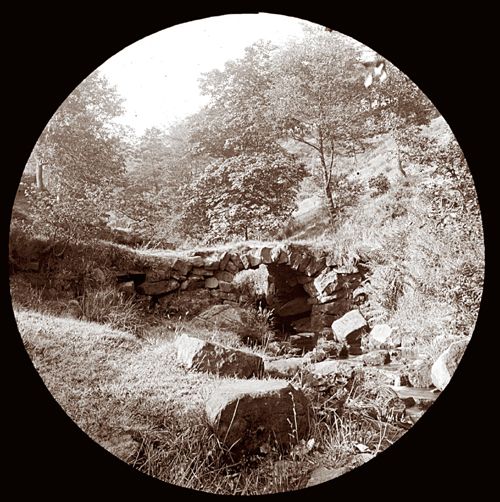
There is evidence of 16th Century bloomeries (iron workings) and slag heaps in the valley and perhaps this is why the bridge was built at this height.

The clough splits into two at the bottom, part runs into the canal as in the photo above and part runs through an underground goit under the canal and road and into the river.
CANAL SIDE TERRACES
These were built in about 1890. There are two mainly back to back terraces with five different names. There was a small shop at the end of one of the terraces.

The Todmorden Almanac reports that on 11th June 1900, Mr Thos Oldfield of Thistle Bottom Buildings, Charlestown, a playing member in the Nazebottom Brass Band died aged 24.
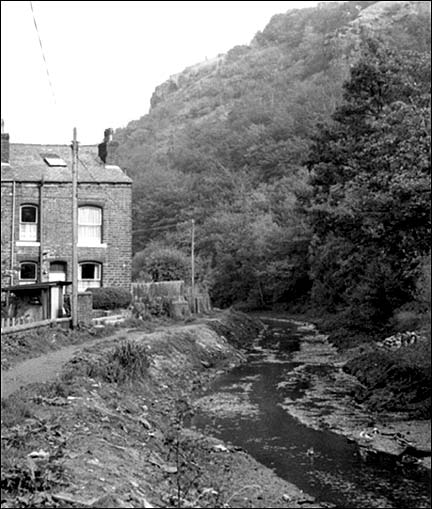

This bridge over the canal was built during 2nd world war to remove felled beech trees from Callis wood. Unfortunately the trees would turn off the end of the bridge so it was never completed. It was demolished in the 1980s.
FERN VILLAS/INGLEDENE
This terrace was built about 1910. Two houses on East side of this terrace were burnt down and no permission to rebuild because of access.
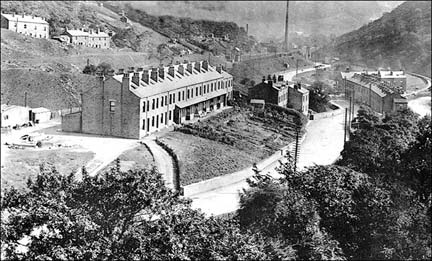

These two photos of Ingledene predate the building of Naze Bottom Chapel which was built at the near end of the terrace. The tall chimney in the background is Calderside Mill.


This view of Whitely arches also shows the chimney of Calderside Mill.
NAZE BOTTOM CHAPEL

The chapel was built to replace Mount Olivet Chapel on the hillside. In November 1906 "a grand bazaar was held in the Co-operative Hall, Hebden Bridge, whereby a sum exceeding £700 was raised in aid of the Nazebottom scheme". The first sod was cut in July 1908 and was opened in March 1909 by Mrs E.J.Crossley of Royd House. It is now a private house.

Between the wars, the local branch of the "Hen Pecked Club" (run by Ernest Ainley) met at the chapel. Their annual highlight was a walk and a good meal every Easter Monday.

Photo by permission of Martin Parr.
Every May, the chapel put on entertainment. Geoff Love the black band leader from Todmorden was a frequent performer.
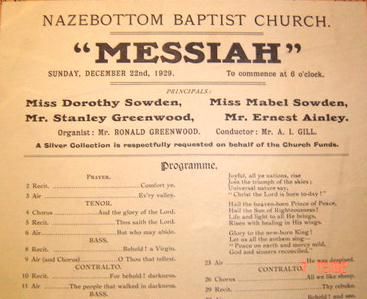
This was found by Kristina Fox on the wall of the Cafe Concerto, a York wine bar!
By 1985 the congregation had dwindled from 50 to only 16 members, 10 regular worshippers at Sunday services and 10 sunday school children. The chapel was suffering from a leaking roof and dry rot which was spreading very fast. £3000 was needed to do the repairs to the roof and double that to remedy the dry rot. After a local campaign to raise the funds, the chapel closed in 1985.

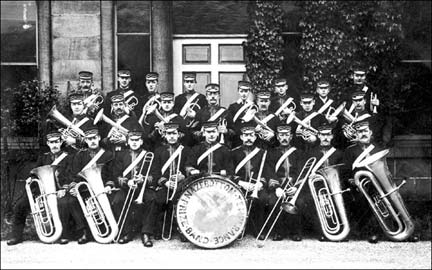
We have very little information about the band and are not sure the date and location of the photograph.
One story recounts that they won a band competition and marched back to the chapel late at night playing and waking everyone up as they went.
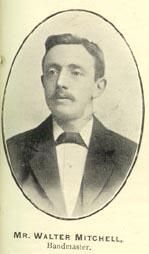
Walter Mitchell was born in Todmorden on 28th July 1874. He was the third generation of bandmasters. His father was bandmaster of the Todmorden Old Band and his grandfather of the Lob Mill Band. He joined the Todmorden Band at the age of 17 and in September of the same year became conductor of the Nazebottom Band.
NAZE BOTTOM PARK
This small park was originally owned by Mytholm Parish Church. The park is at present owned by Calderdale Council.
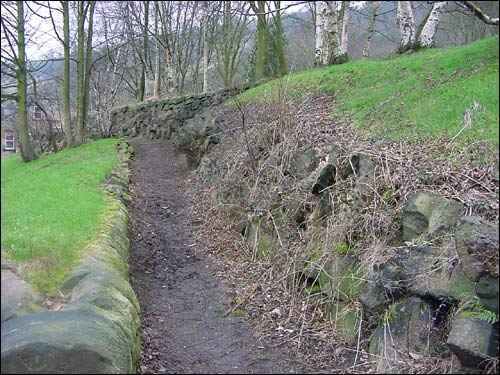
Behind the park was a corrugated iron building referred to as the tin mission. This closed when Mytholm Church was built. It was then used for a firewood business. Behind the park is an area of flat land where was an allotment and two tennis courts, one red ash with lead strips owned by Mytholm Parish, the other possible owned by the Chapel. This became Nazebottom Lawn Tennis Club.

The inscription says "Presented to Nazebottom LTC in memory of Edward Dugdale 1923".
This page was last updated April 2009